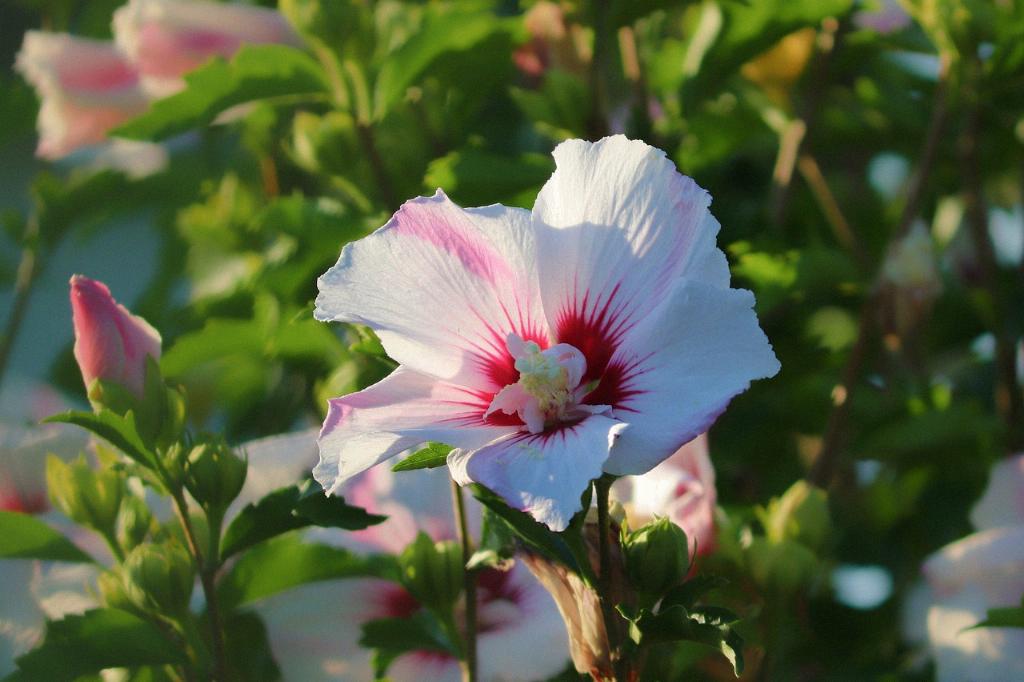One of the key factors in ensuring your hibiscus plant blooms abundantly is to provide it with adequate sunlight. Hibiscus plants thrive in full sun, so it is essential to ensure that your plant receives at least 6-8 hours of direct sunlight daily. If you notice that your hibiscus is not blooming as much as you’d like, consider increasing its exposure to sunlight to encourage blooming.
Ensuring Proper Soil Moisture
Maintaining the right soil moisture level is crucial for the health and blooming of your hibiscus plant. Hibiscus plants prefer moist, well-draining soil, so make sure to water your plant regularly to keep the soil consistently moist. However, be cautious not to overwater the plant, as this can lead to root rot and hinder blooming.
Pruning Practices
Proper pruning is essential for encouraging blooming in your hibiscus plant. Hardy hibiscus blooms on new growth, so it is important to prune the plant at the right time. Avoid pruning your hibiscus too late in the summer or pruning it too severely, as this can delay blooming. Instead, prune your hibiscus in early spring to promote new growth and abundant blooms.
Fertilizing Routine
Another crucial factor in keeping your hibiscus plant blooming is a proper fertilizing routine. Hibiscus plants are heavy feeders and require regular fertilization during the growing season. Choose a balanced fertilizer specifically formulated for flowering plants and apply it according to the package instructions to provide your hibiscus with the nutrients it needs to bloom profusely.
Temperature Considerations
Temperature plays a significant role in the blooming of hibiscus plants. These tropical plants prefer warm temperatures above 60°F (15°C) and do not tolerate cold well. To keep your hibiscus blooming, ensure that the plant is not exposed to temperatures below 50°F (10°C), as this can negatively impact blooming. Consider moving potted hibiscus plants indoors during cooler months to maintain blooming.
Pest and Disease Management
Preventing pest infestations and diseases is essential for the overall health and blooming of your hibiscus plant. Keep an eye out for common hibiscus pests such as aphids, mealybugs, and spider mites, and promptly take action to address any issues. Additionally, ensure good air circulation around the plant to prevent fungal diseases that can inhibit blooming.
Regular Inspection and Maintenance
Regularly inspecting your hibiscus plant and performing routine maintenance tasks can help ensure that it continues to bloom prolifically. Check the plant for any signs of stress, such as yellowing leaves or stunted growth, and address issues promptly. Remove spent blooms to encourage new growth and blooming throughout the growing season.
Choosing the Right Variety
When it comes to keeping your hibiscus blooming, the choice of variety can make a significant difference. Some hibiscus varieties are more prolific bloomers than others, so consider selecting varieties known for their abundant blooms. Research different hibiscus varieties and choose one that is well-suited to your climate and growing conditions to optimize blooming.
Container Gardening Tips
If you are growing hibiscus in containers, there are specific tips to keep in mind to ensure optimal blooming. Use a well-draining potting mix tailored for flowering plants and ensure that the container has adequate drainage holes to prevent waterlogging. Place the container in a sunny location and water the plant regularly to maintain soil moisture levels and encourage blooming.
Companion Planting Benefits
Consider companion planting to enhance the blooming of your hibiscus plant. Companion plants such as marigolds, petunias, and salvias can attract beneficial insects, improve soil health, and create a more favorable environment for blooming. Choose companion plants that complement the growing requirements of hibiscus and plant them strategically around your hibiscus for maximum blooming benefits.
Seasonal Care Guidelines
Adapting your care routine to the changing seasons is essential for keeping your hibiscus blooming year-round. In the spring, focus on pruning, fertilizing, and providing optimal growing conditions to promote blooming. During the summer months, ensure proper watering and protection from extreme heat. In the fall, transition your hibiscus indoors if temperatures drop significantly, and continue to monitor for pests and diseases.
Patience and Persistence
Finally, remember that patience and persistence are key when it comes to keeping your hibiscus blooming. It may take time to establish the optimal growing conditions and care routine for your plant, but with consistent efforts and attention to detail, you can enjoy a vibrant display of blooms from your hibiscus plant.

